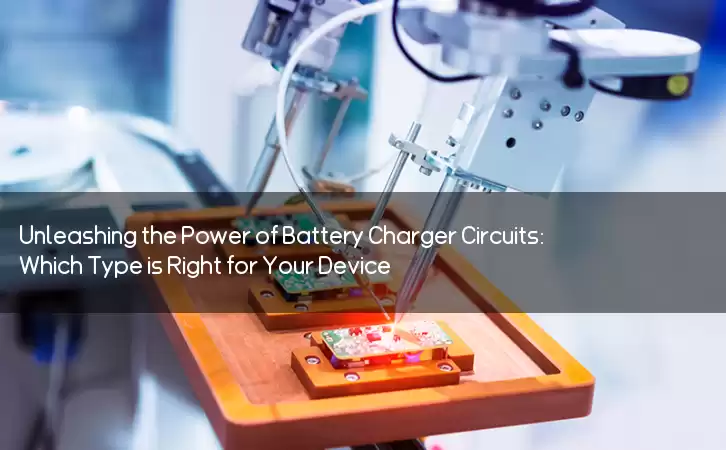Information Center
Unleashing the Power of Battery Charger Circuits: Which Type is Right for Your Device?
Published:2023-08-22 20:34:04 Author:Green WCND Views:55Battery Charger Circuit: Understanding Its Working and Different Types Battery charger circuits are an important component of any electronic device that relies on batteries for power. These circuits ensure that the battery is charged safely and efficiently, allowing the device to operate for longer periods of time. In this article, we will take a closer look at the working of battery charger circuits and explore the different types available. The Working of a Battery Charger Circuit A basic battery charger circuit comprises a transformer, a rectifier, a filter circuit, and a voltage regulator. The transformer converts the high voltage AC from the outlet to a lower voltage AC suitable for charging the battery. The rectifier then converts the low voltage AC to DC voltage, and the filter circuit smooths out any fluctuations in the voltage. Finally, the voltage regulator ensures that the battery is charged to the correct voltage level. Different Types of Battery Charger Circuits 1. Linear Charger A Linear charger is the simplest type of battery charger circuit, commonly found in low-cost devices that use Nickel-Cadmium (NiCd) batteries. Linear chargers work by applying a constant voltage to the battery until the battery is fully charged. However, these chargers are not very efficient, as a large amount of energy is wasted in the form of heat. 2. Switching Chargers Switching chargers are a more efficient alternative to linear chargers. They use a switching regulator to convert the voltage from the outlet to the voltage required to charge the battery. This type of charger is lightweight and compact, making it ideal for portable devices. 3. Pulse Chargers Pulse chargers are designed to charge batteries quickly and efficiently, without damaging the battery. They work by delivering a series of short, high-intensity charging pulses. The pulses are designed to minimize the heat generated during charging, which can damage the battery. 4. Smart Chargers Smart chargers are the most advanced type of charger circuit available. These chargers are designed to monitor the battery’s condition and adjust the charging process accordingly. They use sophisticated control algorithms to optimize the charging process, ensuring that the battery is charged quickly and efficiently, while minimizing the risk of damage due to overcharging. Conclusion In conclusion, battery charger circuits are a critical component of any electronic device that relies on batteries for power. Understanding the different types of battery charger circuits can help you choose the right charger for your device. Whether you are charging a smartphone, laptop, or electric vehicle, there is a battery charger circuit available that can meet your needs.

Power Adapter Design and Customization Guide for Portable Electric KettlesI. Common Design Types for Portable Electric Kettle Power AdaptersPortable electric ke···
I. Common Design Types of Power Adapters External Independent Type (Most Common) Design: A standalone adapter (e.g., "black brick") connected to the p···
Handheld Vacuum Cleaner Power Adapter Selection GuideIntroductionHandheld vacuum cleaners have become a mainstream tool for household cleaning due to their port···
Drill Power Adapter Selection Guide.drill-container { font-family: Arial, sans-serif; line-height: 1.6; max-width: 800px; margin: 0 auto; padding: 20px; } .dril···





